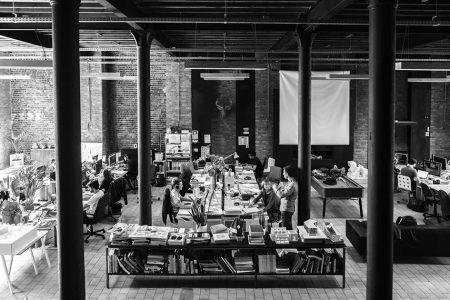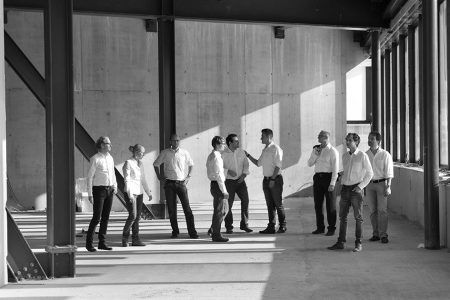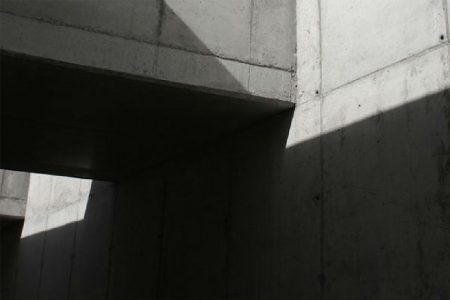“…A dozen people have come to us in the last few years and asked for a modern house… We told them it was difficult to work out individual houses, for the (amount of) work has no relation to the cost of the house… Since there seems to be a real need for such homes, we have attempted to solve the problem… The note of individuality would depend on the individual site.”
Mies van der Rohe, Core House, Chicago Tribune, 8/1952
“…this program is not being undertaken in the spirit of the “neatest trick of the week”. We hope it will be understood and accepted as a sincere attempt not merely to preview, but to assist in giving some direction to the creative thinking on housing being done by good architects and good manufacturers whose joint objective is good housing”
John Entenza, The Case Study House Program Announcement, 1/1945
“Defenders of the individual house as a phenomenon of architectural or social significance are increasingly hard to find. In the right hands, a profound study of our 20th-Century civilization could be written around the fall of the single family dwelling to its present shameful state as an ugly commercial product built of cheap and shoddy materials.”
David Travers, Arts & Architecture Magazine, 4/1966
“…for the first time in world history, mechanical reproduction emancipates the work of art from its parasitical dependence on ritual. To an ever greater degree the work of art reproduced becomes the work of art designed for reproducibility. From a photographic negative, for example, one can make any number of prints; to ask for the “authentic” print makes no sense. But the instant the criterion of authenticity ceases to be applicable to artistic production, the total function of art is reversed. Instead of being based on ritual, it begins to be based on another practice – politics.”
Walter Benjamin, The Work of Art in the Age of Mechanical Reproduction, 1936
“Our fine arts were developed, their types and uses were established, in times very different from the present, by men whose power of action upon things was insignificant in comparison with ours. But the amazing growth of our techniques, the adaptability and precision they have attained, the ideas and habits they are creating, make it a certainty that profound changes are impending in the ancient craft of the Beautiful. In all the arts there is a physical component which can no longer be considered or treated as it used to be, which cannot remain unaffected by our modern knowledge and power. For the last twenty years neither matter nor space nor time has been what it was from time immemorial. We must expect great innovations to transform the entire technique of the arts, thereby affecting artistic invention itself and perhaps even bringing about an amazing change in our very notion of art.”
Paul Valéry, The Conquest of Ubiquity, 1928
























